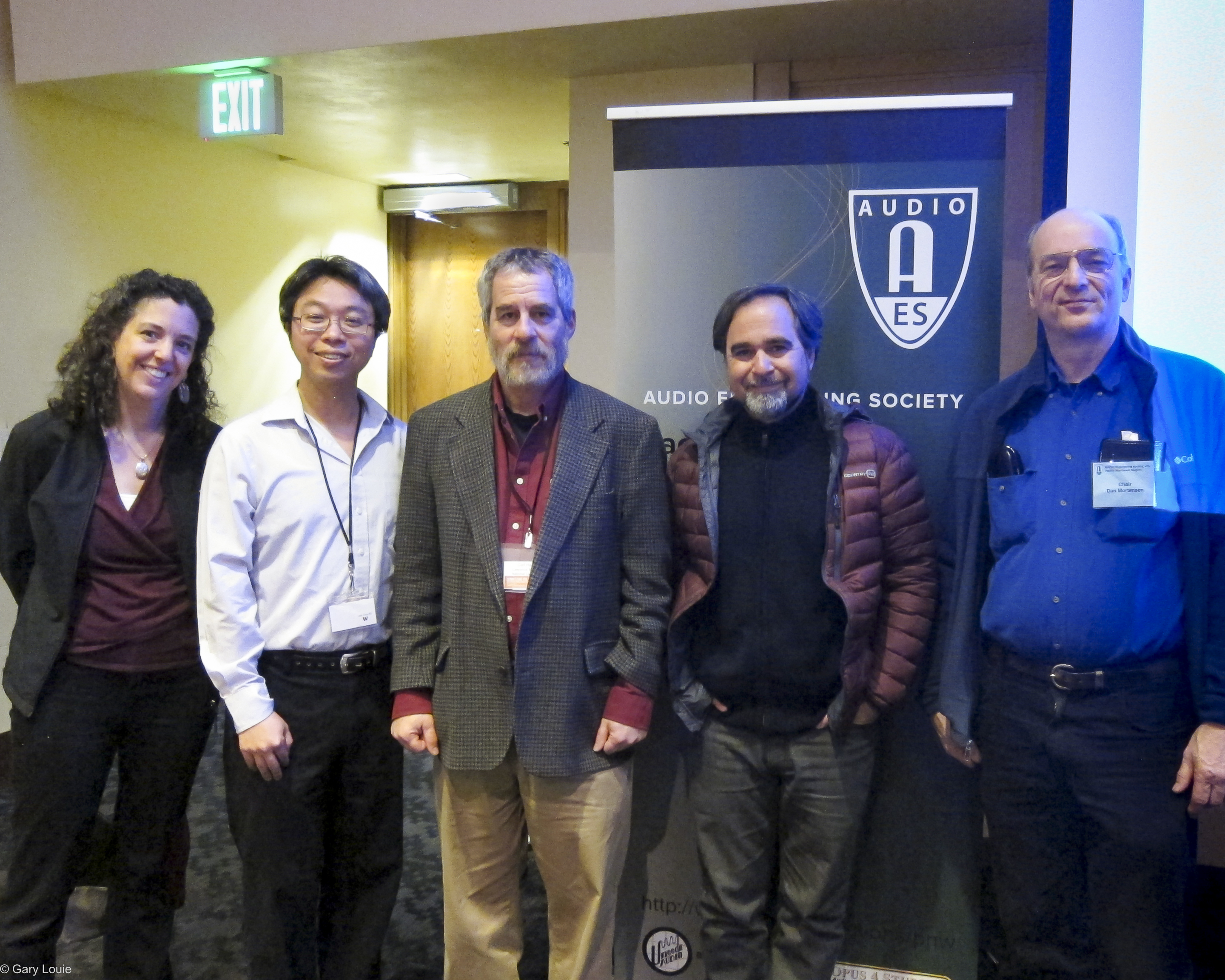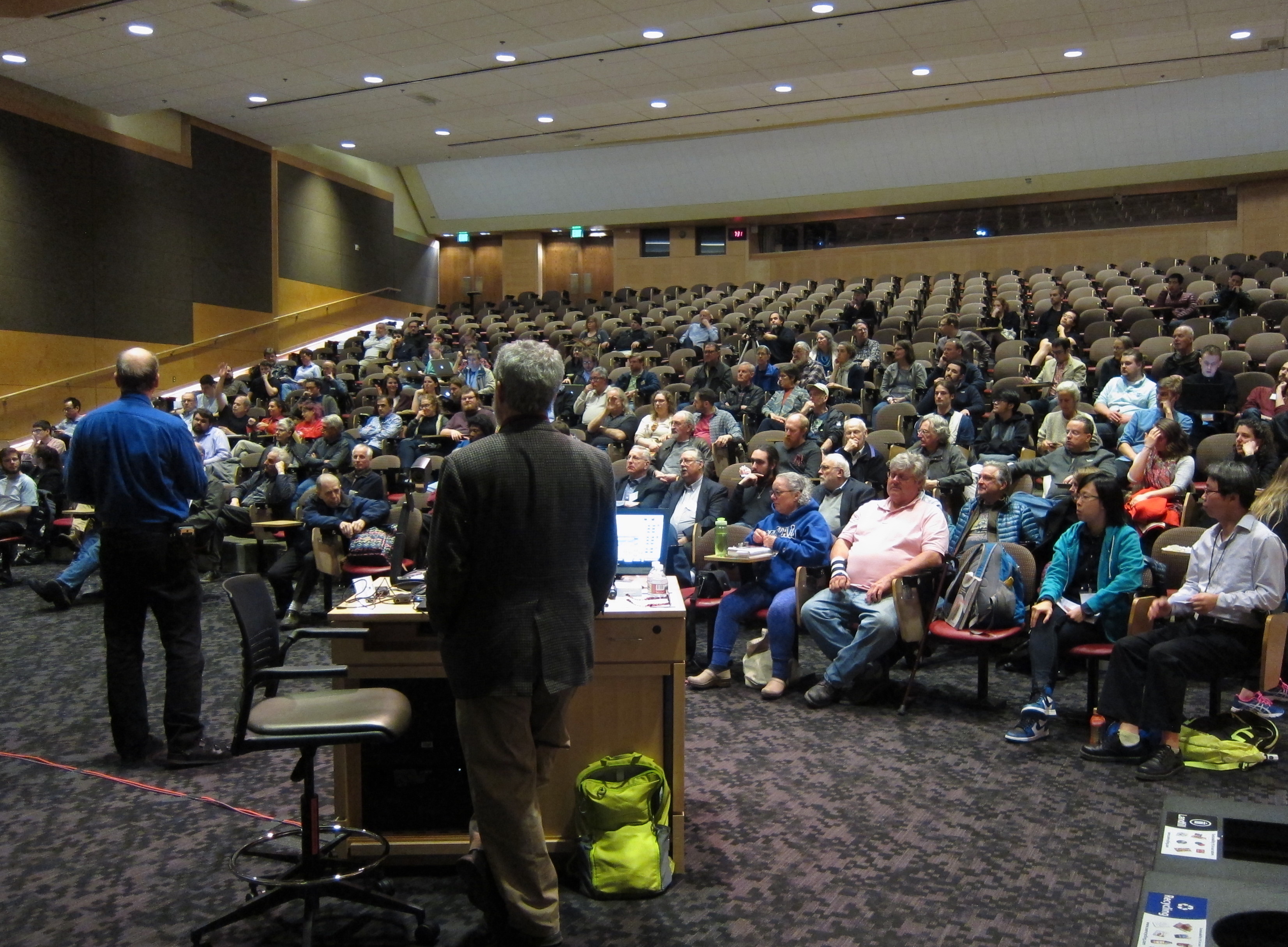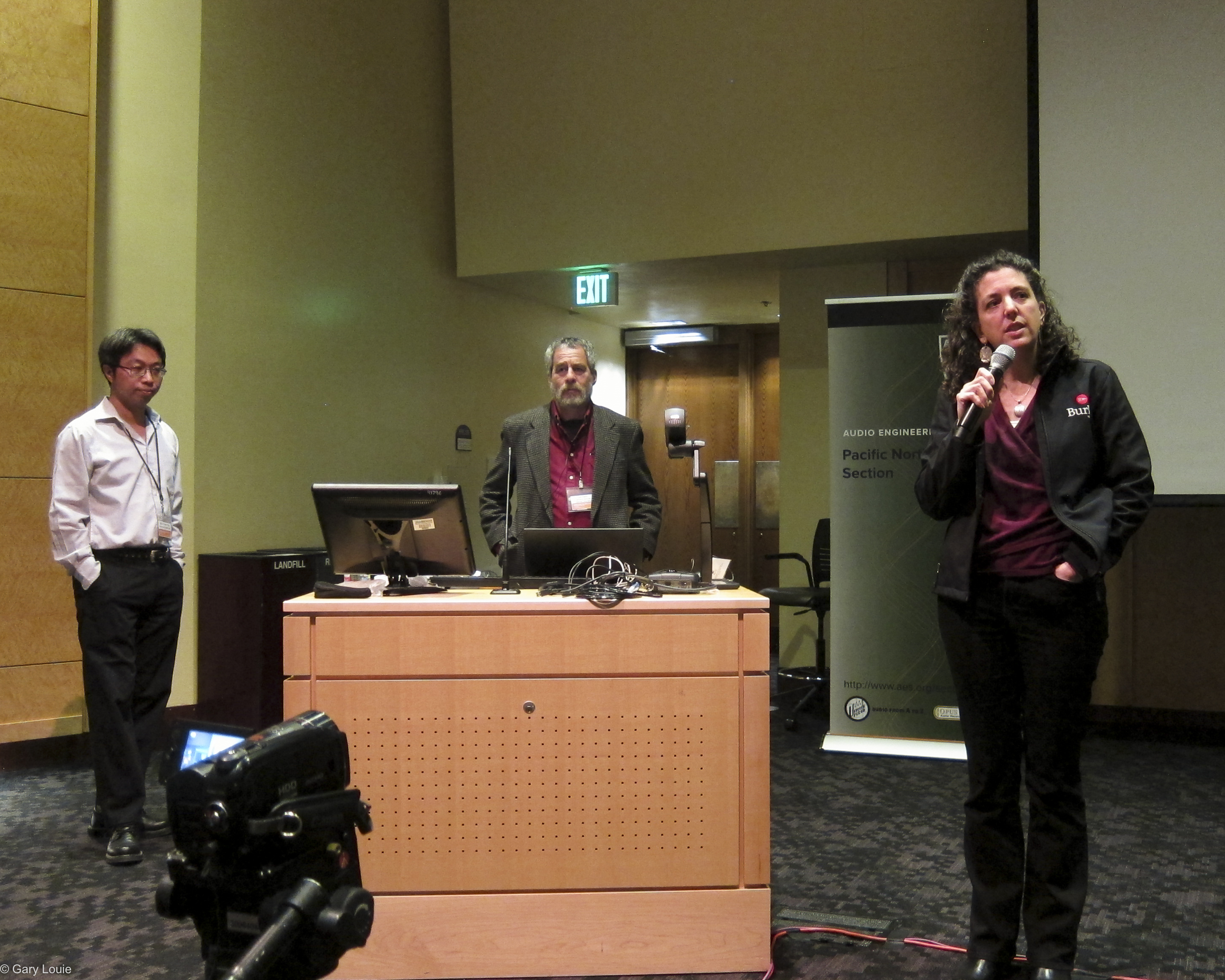
Dr. Kathryn Bunn-Marcuse, Curator, Northwest Native Art at the Burke Museum, Prof. Shih-Chieh Hsu, UW Physics, Dr. Carl Haber, Lawrence Berkeley Lab, Prof. Juan Pampin, UW DXARTS, Dan Mortensen, AES PNW Section Chair.
|

AES-PNW Section Chair Dan Mortensen, with presenter Dr. Carl Haber, address the audience to kick off the well attended presentation sponsored by UW Physics and AES-PNW Section, Bill Holm Center @ The Burke Museum, and UW DXARTS.
|

Prof. Shih-Chieh Hsu, UW Dept. of Physics, Dr. Carl Haber, Lawrence Berkeley Lab at University of California and Dr. Kathryn Bunn-Marcuse, Curator of Northwest Native Art, Burke Museum, during the presentation.
|
Audio recordings of the meeting:
Photos and recording by Gary Louie
|
|
For March 2018, the PNW Section joined with 3 groups at the University of Washington in Seattle to bring Dr. Carl Haber of Lawrence Berkeley Lab to speak about optical restoration of sound recordings. Initiated by the UW Physics Department for their outreach program, "Connecting the Dots," the AES PNW Section, the Bill Holm Center at the UW Burke Museum and the DXARTS program at the UW also co-sponsored. About 22 regular AES-PNW attendees (12 AES members) were in attendance, with over 210 registered. The lecture was given in Kane Hall on the UW Seattle campus.
Introductions were given by Dan Mortensen of the AES PNW Section, Katie Bunn-Marcuse, Curator of Northwest Native Art, Burke Museum, and Prof. Shih-Chieh Hsu, Assistant Professor, UW Dept. of Physics. Bunn-Marcuse related how Dr. Haber had worked on early NW native recordings for the Burke.
Dr. Carl Haber is an experimental physicist. He received his Ph.D. in Physics from Columbia University and is a Senior Scientist in the Physics Division of Lawrence Berkeley National Laboratory at the University of California. He is a recipient of a 2013 MacArthur "genius" grant, and a Fellow of the American Physical Society and the John Simon Guggenheim Memorial Foundation. While primarily a particle physicist with a focus on instrumentation development for high energy colliders, since 2002 he and his colleagues have also been involved in cultural preservation science.
Dr. Haber began by noting how important photographic analysis is to science. Today's digital images are sets of data whose scientific analysis and manipulation are well understood. Dr. Haber mentioned that he heard Grateful Dead drummer Mickey Hart talk on NPR about the importance of preservation of audio history, and this struck a chord in him.
Following a review of the physics of sound and early grooved sound media, he posited that high resolution photos of any grooved media could be processed and the sound extracted with high accuracy. This was not a simple task; years of research were needed to develop the 2D and 3D microphotographic system, as well as the specialized software for processing the images. What resulted was a system he dubbed Irene, which was named for the first song (Goodnight Irene) processed on the device. Seven such systems have been built, 6 in the U.S. and 1 in India. The system is not quite real-time, but not particularly slow. Significant time and labor is required for processing, and "an army" of helping students was mentioned.
He played many examples of R & D sounds and restored sounds. Carl noted that Irene is but one tool preservationists should consider, weighing advantages and disadvantages. Several large projects using Irene were described, with thousands of items transferred to date.
He also played some recordings of what may be the earliest known; A. G. Bell talking in 1885, and a Léon Scott phonautograph of "Claire de Lune" from 1860.
Finally, he wondered if Leonardo DaVinci could've invented sound recording - he had all the same technology as the 19th century. Sadly, DaVinci is credited with stating words to the effect that poetry and music were inferior to sculpture and painting because, [hearing is] "less noble than sight, in that as it is born it dies and its death is as swift as its birth." (from "Treatise on Painting")
Reported by Gary Louie, PNW Section Secretary
|

